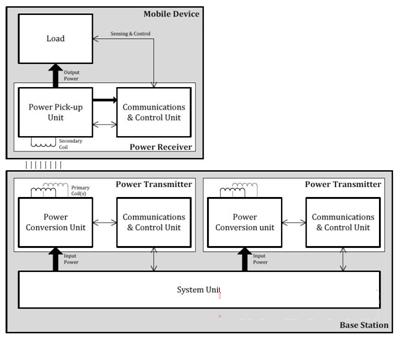Imagine you are a medical technician in an emergency room in a big city. You shuttle between wards and use portable diagnostic equipment to assist your healthcare provider in making a diagnosis. Work pressure is high, the patient is constantly flowing, you have no time to find the socket, plug your device. You are probably willing to put the device in one place and let it charge automatically so that you can go to the next patient and the injured, they need fast and efficient medical staff. Fortunately for you and the patient, wireless charging is already a ready-made technology.
standard
Industry standard specifications are leading the development of wireless charging. The Wireless Wireless Power ConsorTIum's (WPC) standard is also known as Qi (pronounced "odd"). This specification is further divided into three core parts of the system - the power transmitter, the power receiver, and the communication protocol between the two devices. The main feature of this standard is (see the block diagram below):

Source: Wireless Charging Alliance website
A non-contact power transfer method from a pedestal to a portable device. The physical basis of this method is near-field electromagnetic induction between coils.
Use a secondary (or receive) coil to transfer approximately 5W of power.
Operating frequency in the transmission range is 110Hz to 205kHz
There are two ways to place a portable device on the surface of the base:
1. One way is to place a portable device at a designated location on the surface of the base, the base providing energy through one or more fixed locations of the surface.
2. Free positioning allows the portable device to be placed on the surface of the charging station at will, providing energy from anywhere on the surface.
Very low standby power is achievable, depending on the specific implementation.
The flexibility to integrate the system into portable devices
A simple communication protocol allows the portable device to fully control the energy transfer process.
The energy transfer process is divided into 4 phases :
1. Selection phase: The power transmitter monitors the charging interface and detects if the device to be charged is in place. If no equipment is detected, the power transmitter will ping the power receiver continuously. If the device to be charged is not detected within a given time, the power transmitter will enter standby mode.
2. Ping phase: Similar to sonar, the power transmitter sends out a digital Ping signal to detect the rechargeable device. If a device is detected, the power transmitter maintains the power signal at the level of the ping signal and then enters the identification and configuration phase. If no device is detected, the power transmitter returns to the selection phase.
3. Identification and configuration phase: The power transmitter negotiates with the power receiver to determine how much power is provided to the device on the interface that needs to be charged. If the device is removed from the interface, the power transmitter returns to the selection phase.
4. Power transfer phase: The power transmitter supplies energy to the power receiver and adjusts the current required based on the feedback from the power receiver. When an abnormal situation occurs during power transmission, the safety function will turn off the power transmission in time and return to the selection phase.
This standard has been supported by more than 90 companies in all areas of the electronics industry.
technology
Wireless charging uses near-field electromagnetic induction to transfer energy from the charging pad to the portable device. At ever-changing distances, the transmitter coil (Tx) in the charging base transfers energy to a receiver coil (Rx) embedded in a portable device such as a mobile phone. The transmitter/primary coil in the charging base generates an electromagnetic field similar to a conventional transformer when powered up, and the induced current flows through the secondary coil on the portable device. (The charging base has a power conversion circuit that converts electrical energy into an electromagnetic field. At the receiver end, the power pick-up unit reconverts the electromagnetic field into electrical energy to charge the device's battery). The transmitter and receiver communicate with each other to control the charging process.
Vishay Dale Electronics' IWAS series of Qi wireless charging receiver coils/shields are the first commercially available wireless charging coils for WPC-compliant devices. The IWAS series achieves 70% or higher efficiency, providing a high permeability shield for the receiving coil, blocking the charging flux and preventing it from damaging sensitive components or batteries. The performance of the IWAS series of wireless charging receiver coils/shields is not adversely affected by permanent magnets.
Gyroscope Vacuum Cleaner,Automatic Charging Vacuum Cleaner,Gyroscope System Vacuum Cleaner,Cyclone Vacuum Cleaner
NingBo CaiNiao Intelligent Technology Co., LTD , https://www.intelligentnewbot.com